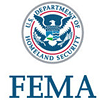Campaign: Community Engagement & Risk Communication
Reduce Losses Outside the SFHA
Strategically FEMA needs to figure out how to reduce the percentage of losses from outside the floodplain. Currently there are statements that 25% of claims come from outside the floodplain. Why do so many people outside the floodplain have flood insurance? Could so many floodplains be drawn incorrectly?
